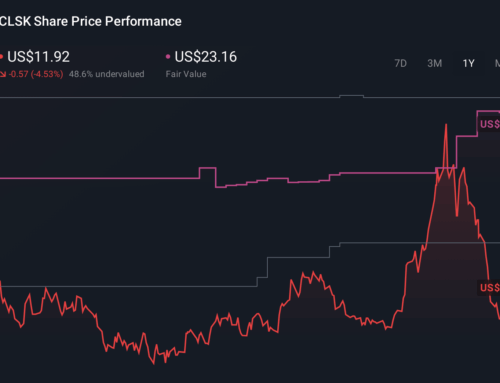Deep Dive: Maryland’s Pivotal 2025 Actions on Solar Energy Policy
April 30, 2025
This article is part of MACo’s Policy Deep Dive series, where expert policy analysts explore and explain the top county policy issues of the day. A new article is added each week – read all of MACo’s Policy Deep Dives.
 The 2025 legislative session will be remembered as one of the most influential gatherings of the Maryland General Assembly (MGA) in a generation. Legislators faced many consequential and time-sensitive issues, which resulted in difficult decisions and long-lasting impacts, all with the goal of improving quality of life for Marylanders.
The 2025 legislative session will be remembered as one of the most influential gatherings of the Maryland General Assembly (MGA) in a generation. Legislators faced many consequential and time-sensitive issues, which resulted in difficult decisions and long-lasting impacts, all with the goal of improving quality of life for Marylanders.
Energy policy, in particular, was a central focus. Legislators, special interests, and counties spent months debating and negotiating during the lead-up to Maryland’s 90-day General Assembly Session, with final legislation not passing until the closing hours of Sine Die.
As a result, Maryland’s energy landscape has shifted significantly, with new policies aiming to re-balance previously competing priorities. This week’s deep dive explores HB1036/SB931, the Renewable Energy Certainty Act— and what it means for counties.
Pre-2025 Landscape
Before the 2025 legislative session, Maryland’s energy policy was shaped by ambitious efforts aimed at cutting greenhouse gas emissions, boosting electrification, and growing community solar. Maryland’s Renewable Portfolio Standards also set aggressive targets for 2030: 52.5% of statewide energy from renewables, including 14.5% from solar and 13.02% from offshore wind.
However, these statewide ambitions increasingly clashed with local authority. Historically, county governments controlled land use, with limited exceptions like the siting of energy facilities, which fell under the Public Service Commission (PSC) through the Certificate of Public Convenience and Necessity process. Tensions culminated in the 2019 case Board of County Commissioners of Washington County, Maryland v. Perennial Solar, LLC, where Maryland courts ruled conclusively that counties were preempted from regulating the siting of energy facilities over 2 megawatts (MW), leaving final approval with the PSC. While the PSC was required to consider local policies and community impacts, it retained ultimate authority.
Solar’s vast footprint, unlike traditional “point source” energy generation through power plants, has sparked increasing local opposition, and between 2019 and 2024, counties challenged roughly 100 projects—with the PSC rarely siding against developers. Early missteps in project design further strained relations, and though later improvements helped, the damage to public trust lingered. Meanwhile, rising energy demand—driven by climate policy, electrification, and the booming data center industry in neighboring Virginia—strained Maryland’s grid, prompting the PJM regional authority to warn of potential brownouts and blackouts. The MGA convened in January facing a convergence of environmental, political, and infrastructure pressures.
MGA Leadership Legislative Package
Dozens of bills were introduced that dealt with energy, but the main focus was on the three-bill energy package jointly put forward by the House Speaker and Senate President, joined by the leadership from the two chambers’ committees with energy policy jurisdiction. All three bills were amended and passed by the General Assembly and are currently awaiting the Governor’s signature. Below is a comprehensive analysis of the particular bill that generated broad interest from county officials, the Renewable Energy Certainty Act.
HB1036/SB931 – The Renewable Energy Certainty Act
The Board of County Commissioners v. Perennial Solar decision established state preemption over county authority but left key implementation questions unanswered. For years, counties, communities, and developers navigated unclear and inconsistent PSC decisions. Beginning in the fall of 2023, MACo collaborated with state officials, the solar industry, and environmental groups to draft comprehensive legislation for clarity. Although MACo initially opposed the Renewable Energy Certainty Act (HB1036/SB931) due to major deviations from prior efforts, it shifted to a neutral stance after securing key county priorities through significant amendments. The bill addresses solar, energy storage, and state lands.
Solar
- Distributed Generation Certificate of Public Convenience and Necessity, or DG-CPCN (pages 3-12) – The final bill did incorporate parts of SB983/HB827, which establishes a new expedited DG-CPCN for solar projects between 2MW and 5MW projects. The Power Plant Research Program (PPRP) and the PSC are charged with establishing more stringent design and siting standards. Applicants must demonstrate that they comply with these standards in order to be eligible for this new faster process. Unlike traditional CPCNs, counties will have to be notified within 30 days of the date of an application as opposed to 90 days. New regulations implementing this new CPCN are set to be promulgated by July 1st, 2027. MACo is actively working with both the PPRP and PSC to help develop strong design and siting standards.

- Reduced Threshold (Page 13, Lines 6-10) – Since the creation of the CPCN process, energy projects above 2MW were largely the purview of the state, and projects below 2MW were left to the counties to regulate. HB1036/SB931 changes that somewhat for solar projects, as counties are now preempted down to 1MW. Functionally, this means that a county cannot enact siting standards more stringent than those enumerated for projects 1MW and above.
- Siting Standards (Page 15, Line 29 – Page 30, Line 31)– The siting standards are the primary function of the entire legislation. These standards were developed with extensive input from county planners and industry representatives. These standards set common rules and, most importantly, are enforceable. Counties may enact standards that are less stringent than those listed but may not enact more stringent standards.
- Highlights include:
- Extensive Watering and Vegetative Screening Management Requirements, must have a 90 percent survival threshold
- Extensive Landscape Bonding Requirements
- Setbacks of 150ft from residential dwellings and 100ft from property lines
- Mitigation of visual impacts on preservation areas, rural legacy areas, priority preservation areas, public parks, scenic rivers or byways, designated heritage areas, and certain historic sites.
- Include a viewshed in applications analysis
- Limits on grading and ban on removing topsoil.
- Average height limitations of not more than 15ft.
- Ban on emitting light from dawn to dusk.
- Highlights include:
- Ban on Bans (Page 21, Lines 10-26) – Counties are preempted from outright prohibiting solar energy development. Additionally, counties will also be required to process solar development applications below 5MW as a permitted use.
- Addressing Competing Priorities (Page 21, Line 27 – Page 22, Line 17) – One of the biggest challenges for counties in developing solar has been competing state policies and priorities. The legislation clarifies the State’s intent in two significant ways: banning large-scale development in Tier 1 and 2 growth areas and limiting development to no more than 5 percent of Priority Preservation Areas (PPAs).

Addressing Competing Priorities – The legislation bans large-scale development in Tier 1 and 2 growth areas and limits development to no more than 5% of Priority Preservation Areas.
Energy Storage
Energy Storage (Pages 23 – 25) was addressed to a lesser extent compared to solar. Specifically, several of the siting standards that applied to solar were also applied to energy storage projects. Highlights include:
- Provide landscaping buffer or vegetative screening if required by the local jurisdiction
- Provide for four–season visual screening of the front–of–the–meter energy storage device
- A local jurisdiction may not require the use of a berm for a front–of–the–meter energy storage device
- Minimize grading to the maximum extent possible
- May not remove topsoil from the parcel, but may move or temporarily stockpile topsoil for grading
State Lands
Finally, the legislation (Page 34, Line 25 – Page 35, Line 7) also included a provision requiring the Department of Natural Resources, Maryland Energy Administration, Department of Transportation, and the Department of Planning to assess the suitability of state lands appropriate for solar development.
Looking Ahead
Solar
While significant progress was made this Session in providing more certainty to all stakeholders, legislation aimed at adjusting certain aspects of RECA is highly likely during the 2026 legislative session, especially as more of the policy gets road-tested through implementation. Early contenders for continued debate include the deduction of salvage value in calculating bond amounts and the exclusion of counties without growth tiers or PPAs by January 1, 2025, among other concerns.
Changes in Federal Policy
The biggest influence on future Maryland solar policy will be what happens at the federal level. Both the Trump Administration and members of Congress have voiced loud support for shifting federal priorities away from renewables and back toward fossil fuels. Much of the energy industry is generally buoyed by federal subsidies; if those dollars are shifted away from solar, that could have a significant impact on whether future projects remain viable investments.
Transmission
Besides the topic of generation, the siting of transmission infrastructure also became a topic of major focus during the 2025 Session. While some work was done to improve current transmission infrastructure, many of the biggest challenges remain unresolved. Regardless of whether Maryland embraces renewables or not, there will need to be significant improvements in and expansion of transmission infrastructure. The current infrastructure is either incredibly dated or just no longer suitable to bear the growing demand for energy. This will likely mean more controversial line projects as well as upgrades to existing assets.
For those interested in the other leadership energy-related bills:
- HB1035/SB937 – The Next Generation Energy Act
- HB1035 Fiscal Note
- HB1037/SB909 – Energy Resource Adequacy and Planning Act
- HB1037 Fiscal Note
Search
RECENT PRESS RELEASES
Related Post




